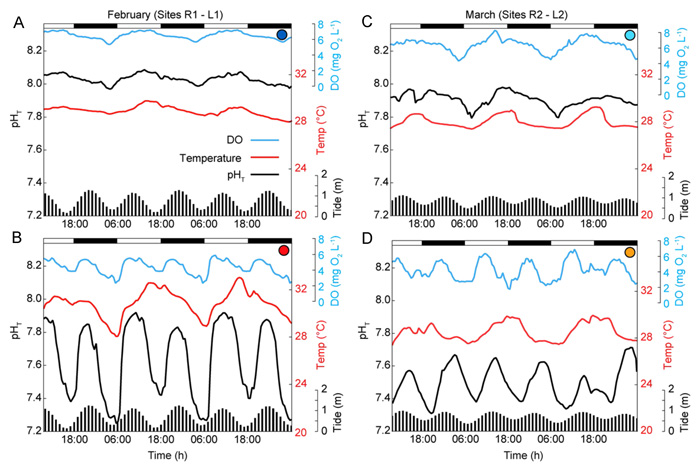| Follow @co2science |
Paper Reviewed
Camp, E.F., Nitschke, M.R., Rodolfo-Metalpa, R., Houlbreque, F., Gardner, S.G., Smith, D.J., Zampighi, M. and Suggett, D.J. 2017. Reef-building corals thrive within hot-acidified and deoxygenated waters. Scientific Reports 7: 2434, DOI:10.1038/s41598-017-02383-y.
Recognizing an intrinsic weakness in laboratory-based studies of the combined impact of rising temperature and ocean acidification on corals, Camp et al. (2017) correctly state that "many [such] experiments and observations ... largely fail to account for natural oscillations of these factors inherent to coastal systems," which oscillations can fluctuate on a daily or seasonal basis beyond that projected to occur due to climate change. Consequently, they note that "understanding ecosystem scale re-organization under climate change will inevitably only be achievable through a more collective assessment of naturally extreme coral systems," adding that "it is therefore imperative to identify additional and potentially unique study sites where multiple stressors operate, and within the context of natural variability of the main environmental parameters predicted for future reefs."
As their contribution to the topic, Camp et al. set out to examine and compare the similarities and differences of a semi-enclosed lagoon system in Bouraké, New Caledonia, where "diverse and relatively abundant coral populations persist under the combined stress of elevated temperature, low pH and low dissolved oxygen," with adjacent shallow reef reference sites that are free from such stresses. And what did that comparison reveal?
As shown in the figure below, the lagoon waters were quite different from the reference reefs in terms of temperature, pH and dissolved oxygen content, where the daily variances were much higher in the lagoon environment. Consequently, Camp et al. determined that corals "spent 44% of time at pHT of 7.7-7.8 and 71% of time at temperatures predicted for the end of the century." Nevertheless, despite "the extreme physico-chemical conditions of the Bouraké lagoon," the researchers report that "scleractinian relative coral abundance was generally high (26.7-34.6%) and comparable to the reference sites (10.3-55.0%)," as was coral diversity, which was described as "similar" among the sites.
As a result of these and other findings, Camp et al. were led to conclude that their "observations of well-established, diverse, and architecturally complex coral taxa in the Bouraké lagoon provide compelling evidence that diverse coral populations can persist (albeit with reduced calcification) under high-temperature (ranging from 25.9-33.1°C), low-pH (ranging from 7.24-7.91) and deoxygenated waters (ranging from 1.80-6.97 mgL-1), relative to neighboring reefs." With regard to just how the lagoon corals survive and thrive in this environment, Camp et al. write that "metabolic plasticity, through up-regulation of metabolic rates, appears to be a key mechanism." Consequently, in light of all of the above, it would be wise for policy makers to give more consideration to the impacts of ocean acidification and warming as observed from natural environment analogs as opposed to more restrictive laboratory based analyses. And when such consideration is given, it appears that corals are well equipped to deal with future changes in their environment, be they naturally or anthropogenically induced.

Figure 1. Physicochemical parameters measured in February for reference reef site R1 (A) and lagoon site L1 (B), and March for reference reef site R2 (C) and lagoon site L2 (D). pH in total scale (pHT), dissolved oxygen (DO, mg L-1), and temperature (°C) were coupled to the tidal cycles (x axes, bottom; vertical bars) and daily light cycles (x axes, top; horizontal bars). Source: Camp et al. (2017).




